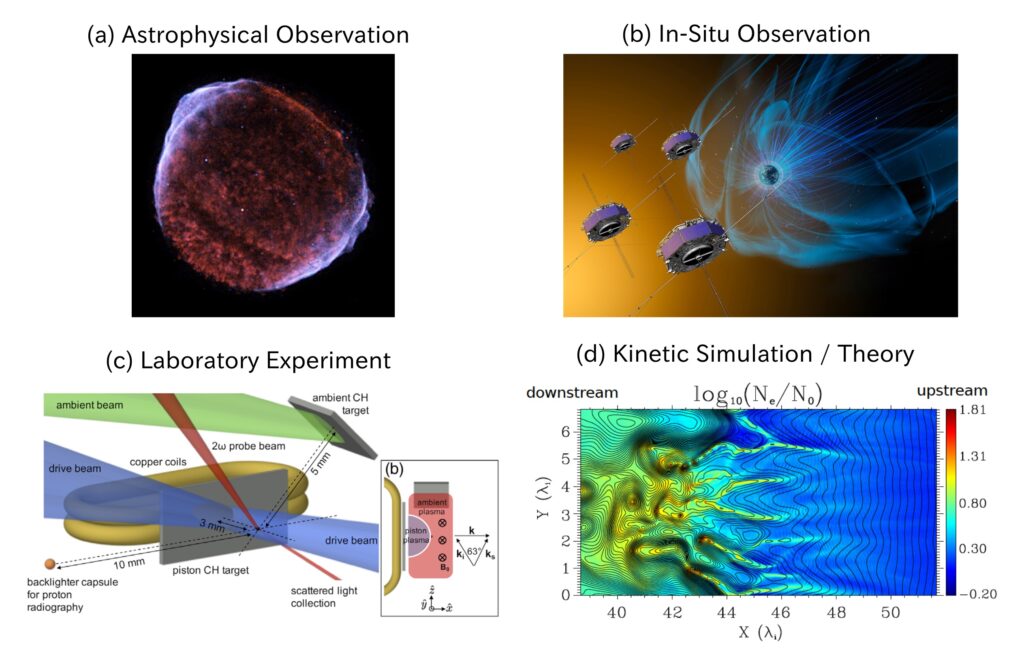Collisionless shock waves in dilute ionized gas in space are the most probable acceleration sites of high-energy cosmic rays. A shock wave converts a supersonic bulk-flow kinetic energy into energy in random motion of ions and electrons, including thermal and nonthermal particles, and turbulence. The absence of binary collisions between individual particles at the collisionless shock raises the fundamental question: How is the energy partitioned into the different components? Answering this question requires understanding of the complicated physics of collisionless dissipation at the shock. This has been a common interest between space physics and astrophysics. Furthermore, laboratory astrophysics using high-power lasers has been an emerging field that shares a great interest in the same problem.
We here propose an international team consisting of researchers from all these different fields. Since the topic is intrinsically interdisciplinary, it is necessary to make up such a team with broad backgrounds. We will discuss the problem of energy partition by combining state-of-the-art knowledge that has been obtained with different approaches: theory, kinetic simulations, in-situ and remote-sensing observations, as well as laboratory experiments. Specific questions that we will address in the context of energy partition include the ion-electron equilibration, the nonthermal particle production rate, and the role played by turbulence. The ISSI (International Space Science Institute) team provides an ideal opportunity to tackle the problem. The interdisciplinary discussion will naturally include the future direction of research.

See full proposal for more details.
